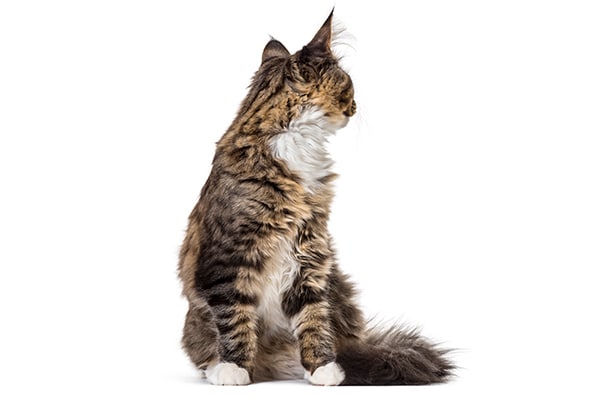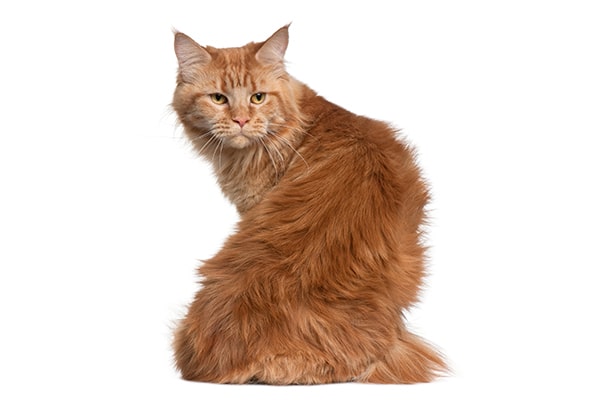Scooting, which is the polite term for a pet dragging his butt along the ground, is seen more often in dogs, but cat scooting happens sometimes, too. Usually, this means a cat’s rear is itchy or irritated. A little detective work can help you get to the bottom of the cause behind all that cat scooting.

There are a variety of reasons for cat scooting. Photography © GlobalP | iStock.
1. Cat Scooting Happens Because of Worms
One of the more common reasons for cat scooting is intestinal parasites. “Tapeworms is the one that I usually think of,” says Cynthia Karsten, DVM, outreach veterinarian for the Koret Shelter Medicine Program at the University of California, Davis, School of Veterinary Medicine’s Center for Companion Animal Health. Other parasites may also cause itching and scooting. With tapeworms, you might see evidence in your cat’s poop (tapeworms look like grains of white rice), but some parasites can’t be seen with the naked eye. Other signs of a parasite infestation include diarrhea or constipation, weight loss and a potbelly.
2. Allergies
If your cat has allergies that cause itchy skin, the itchiness could extend to all the areas of the body, including her rear end. Although it’s possible for cat allergies to be caused by an intolerance to certain proteins in food, environmental allergies are more frequently seen in cats. “With dogs we think about diet,” Dr. Karsten says. “Cats just don’t seem to have the same food allergies that dogs do, so it’s not as common.” Environmental allergies in cats can be caused by dust, pollen, mold, mites and even fleas.
3. Anal Gland Issues
Cats seem to have fewer anal gland issues than dogs. That said, cat scooting might indicate issues with your cat’s anal glands. The anal glands are two small internal sacs positioned on either side of the anus. The glands produce a pungent liquid that is probably a mechanism for marking territory. “They should, if they’re fine, express every time the animal poops,” Dr. Karsten says.
Sometimes, inflammation prevents this liquid from being expelled when the cat poops. Instead, it builds up inside the two sacs, where it can become very thick, like a paste. “When they become uncomfortable, we see the pet scooting because the animal can’t reach back there, so the best they can do is try to scoot their bum,” Dr. Karsten explains. “Bacteria from feces can travel up into the sac, but is normally flushed out when the sacs are expelled. If they’re impacted and that bacteria gets in there, then they can get an infection and then possibly even an abscess.”
What to Do About Cat Scooting
If your cat is scooting, it’s time for a visit to the veterinarian to find out what’s causing it. Your vet will do a complete physical exam, looking for signs of parasites, itchy skin or problems with the anal glands. “The vet will likely want to do a fecal test and possibly a good deworming, especially if there’s diarrhea involved,” Dr. Karsten advises. “He or she will also check for any sort of perianal or vulvar inflammation infection. Yeast can be really itchy. Your vet might want to get a cytology of that area.”
Treating cat scooting depends on the cause. Deworming should take care of any irritating parasites. If the anal glands appear impacted or infected, your vet will express them and possibly treat them with medication. Allergies can be trickier to address, but once the cause of the allergies is identified, your vet will be able to prescribe appropriate treatment to soothe the itch and put a stop to your cat’s scooting for good.
Tell us: Have you ever witnessed cat scooting? What turned out to be the cause?
Thumbnail: Photography © GlobalP | iStock.
This piece was originally published on January 4, 2018.
